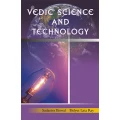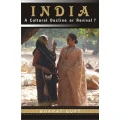Shop by Category

Short Description
Dr. Samanta studies the ‘sacred complex’ of Ujjain — the ksetra itself, the Sipra river, bathing ghats, etc. He also investigates the linkages between this ‘cultural centre’ and the ‘cultural area’ and compares this sacred complex with others.More Information
| ISBN 13 | 9788124600788 |
| Book Language | English |
| Binding | Hardcover |
| Total Pages | 215 |
| Edition | 1st |
| Release Year | 1997 |
| Publisher | D.K. Printworld Pvt. Ltd. |
| Author | Dipak Kumar Samanta |
| GAIN | XAK70CQZ0MX |
| Category | Cultural Studies |
| Weight | 400.00 g |
| Dimension | 14.00 x 22.00 x 1.80 |
Frequently Bought Together

This Item: Sacred Complex of Ujjain
₹325.00
Sold by: DK Printworld
Choose items to buy together
ADD TO CART



This Item: Sacred Complex of Ujjain
Sold By: DK Printworld
₹325.00
Total Price : ₹325.00
Product Details
An anthropologist of wide repute here profiles Ujjain: a millennia-old, pilgrim centre that has been celebrated in history, legend and mythology. Located on the eastern bank of the Shipra — in Malwa’s “culture-area” — in Madhya Pradesh (Central India), it is a major link in the sacred network of the Hindu India. And has been traditionally venerated all across the subcontinent as one of the barely four sites for the periodic kumbha melas (religious congresses). This ancient city of Avantika (or Ujjayini), in fact, exhibits all that has gone into the shaping of Hindu ritualistic behaviour. Yet the crowning glory of Ujjain is centred around Mahakal: Lord Shiva’s temple, which is believed to be old beyond history. In opening out the cultural panorama of Ujjain, Dr. Samanta spotlights everything that reinforces the sanctity of this sacred complex: like, for instance, the ksetra itself, the Shipra river, bathing ghats, crematoriums, priests, preachers, pilgrims, mystifying rituals, religious discourses, festivals, yatras, pageants, ascetics’ congregations, and godmen’s institutions — with meticulous description of the Mahakal temple which, generation after generation, has compelled country-wide attention. The book also investigates the linkages between this “cultural centre” and the “cultural area”, and how this sacred complex compares with its counterparts elsewhere in India. The author has, for this study, employed standard anthropological techniques, coupled with several spells of his fieldwork and his personal interviews with a number of key informants. Also included here is a painstakingly compiled glossary of non-English words.














